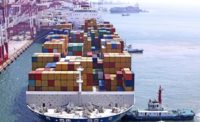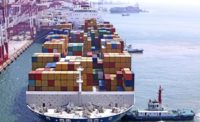SW: First, talk about the issue at hand. What is going on with possible tariffs and quartz?
Shah: There are two separate issues as it relates to tariffs on quartz.
First, there is the petition that Cambria filed in April 2018 related to allegations that quartz from China is being sold at "less than fair value" in the U.S. market and that China is subsidizing its quartz products resulting in material injury to Cambria. This only applies to quartz products from China.
The U.S. International Trade Commission (ITC) already has made a preliminary finding that there is a “reasonable indication” that Cambria (and other U.S. quartz producers) are being material injured by quartz imports from China. The Department of Commerce (DOC) will start to impose duties at the U.S. border on quartz products in two stages: (1) in mid-September, the DOC will announce its preliminary countervailing duty (CVD), and (2) in mid-November, DOC will announce the preliminary antidumping duty (AD). We have limited information as to what the preliminary duty deposit rates will be at this time.
In order for the AD/CVD duties to become final, DOC will render AD/CVD determinations that could change the rates. Additionally, the ITC must make an affirmative injury determination regarding whether Cambria is being materially injured or threatened with material injury by Chinese imports. The ITC’s final investigation will be conducted in early 2019 and will include a public hearing before the full Commission. If the ITC finds that Cambria has not been injured, then there will be no duties collected going forward. An affirmative injury finding likely means that duties will be collected for the next five years.
Second, the Office of the U.S. Trade Representative (USTR) is conducting a Section 301 investigation in which import tariffs of up to 25% could be placed on an additional $200 billion of imports from China. The foundation for the USTR investigation if the People’s Republic of China's policies and practices related to technology, transfer, intellectual property and innovation. USTR proposes to include natural stone, quartz and most other builder material related items. A public hearing was held in Washington from August 20 to 23, and MSI and testified against these additional tariffs.
The two investigations are unrelated and are being conducted independent of each other. The remainder of the Q&A will focus on the quartz AD/CVD investigations.
SW: What brought this about?
Shah: We and others in the industry were surprised that Cambria initiated the quartz AD/CVD investigations. U.S. demand for quartz products is at an all-time high, and prices have been very strong as well. Cambria appears to have made certain poor strategic business decisions that have limited its ability to capture the strength of the market -- this being said, we understand that Cambria -- and the other two U.S. producers, LG and Caesarstone -- continue to enjoy very high profits. This is not surprising. The fact is that consumer demand for quartz is so strong that our industry has failed to keep pace, causing prices to raise and supply shortfalls to occur.
SW: What are you and MSI trying to do about it?
Shah: We have formed a coalition of importers and fabricators to defend against the Petitions. We have retained a team of attorneys and other experts in Washington D.C. that specializes in these type of cases.
In terms of our business arrangements, we are working with our customers to ensure that their supply needs are met. This has been challenging, even though China has always been but one of our sources, because there are certain very innovative colors and products that only certain Chinese manufacturers are able to produce, and no other manufacturers around the world can replicate. There is no question that Cambria’s action will harm the U.S. consumer in this regard.
SW: What are the possible outcomes from all of this?
Shah: For MSI, regardless of outcome, we all should be able to continue to grow our quartz business as the industry is very healthy. For MSI in particular, we have great relationships with factories around the world, invest heavily in developing new colors and have a highly successful track record of promoting colors that appeal to the mass market. We deliver large volumes to these factories to insure we can provide our customers a compelling combination of innovative colors, impeccable service and a fair price. We have already secured supply for the vast majority of our colors from countries other than China.
Small U.S.-based American businesses will be disproportionately negatively affected if the U.S. Government imposes significant AD/CVD duties. There is a shortage of quartz supply in the U.S. market, and the imposition of duties on Chinese imports will only increase the challenges facing those firms.
In the scenario where the ITC rules against Cambria, we believe there will continue to be a very healthy quartz industry for all industry participants. As in the past, the relative winners and losers across the industry will be based on the success of their business plans and business strategies. We expect both domestic manufacturers (including Cambria) and importers/distributors to continue to grow their quartz businesses.
SW: Why should fabricators care?
Shah: Fabricators should care for several reasons. First, certain fabricators are direct importers of quartz from China both in the form of slabs, as well as in the form of cut-to-size countertops. They should seek guidance on the potential range of AD/CVD outcomes and how this will affect their supply chains. Second, to the extent that fabricators are relying on quartz from China, they will want to insure that their suppliers are able to navigate through these issues to avoid supply chain disruptions.
I want to make an important point here about U.S. market conditions: natural stone continues to decline at single digit rates and quartz continues to be the replacement product for these lost sales. It is thus important for fabricators to avoid supply issues with their providers to offset some of the declines in natural stone.
Finally, the imposition of the AD/CVD duties on quartz from China will further exacerbate an already very tight U.S. market. We expect to see even higher U.S. prices for quartz in the near-to-medium term as shortages increase and certain colors/products unique to China become entirely unobtainable. We believe these conditions will enable the combined manufacturer/distributor quartz players to take advantage of the resultant supply-and-demand imbalance and raise prices even higher to maximize profits. Fabricators will want to make sure they work closely with their suppliers to understand the impact of these tariffs to their material pricing as they bid on business opportunities in the coming months.
SW: Anything else you would like to mention?
Shah: There is one other point we think worth mentioning: it is important for the U.S. Government to hear from all sides in the AD/CVD investigations. This is particularly the case before the ITC, which is tasked with assessing the economic state of the U.S. quartz market and industry. Cambria had an initial advantage in this regard because it spent years preparing the Petitions and selected its timing to present them. As we move into the later stages of the investigations, however, U.S. fabricators and other major players in the broader quartz industry need to tell their stories forcefully.
Fabricators and their 30,000 American employees across the U.S.A. have a key role to play before the ITC. The dollar value added by fabricators in an installed quartz countertop is typically greater than the quartz material cost. Fabricators, just like Cambria, LG and Caesarstone are thus domestic producers of quartz here in the U.S. These facts have been completely ignored by the U.S. Government to date, in part because Cambria minimized the role of fabricators in the domestic manufacturing industry, falsely claiming to both the ITC and DOC as follows:
1) “The only equipment required to fabricate is a saw to cut the slab and a hand router to finish the edges.”
2) “It is not unusual for fabricators to run operations out of small spaces such as garages with only a couple employees, a saw and a hand router.”
3) “There is no comparable level of technical expertise involved in fabricating quartz surface products. The fabrication process merely requires the ability to operate a saw, potentially a CNC machine and polishing equipment, all of which are relatively common and uncomplicated equipment.”
We hope that fabricators will work with us to correct the ITC and DOC factual records on these important points. This is vital to our efforts to persuade the ITC and DOC to make negative final determinations in 2019.






